In the age of technology, businesses are drowning in a sea of data, desperately searching for valuable insights to guide their decisions. But alas, much of this data is an unorganised mess, making it near-impossible for companies to extract meaningful information. That’s where Microsoft Syntex swoops in to save the day! This genius AI-powered service provides businesses with the tools they need to understand and manage their unstructured data. By using cutting-edge natural language processing techniques, Syntex can decipher the meaning behind piles of disordered documents, images, and other forms of content. This blog will dive deep into what Microsoft Syntex is and how it works.
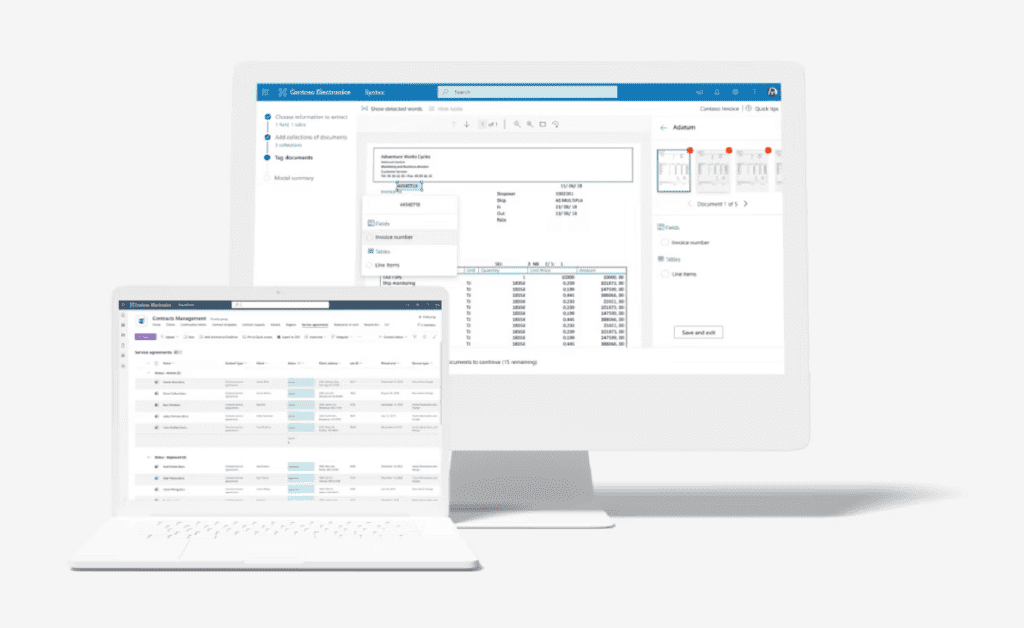
Microsoft Syntex – Where it All Began
As we said earlier, Microsoft Syntex is Content AI integrated into the flow of work, but what does that really mean? Before we get into the nitty gritty of what Microsoft Syntex is, let’s go back to where it all began. It all started in 2019 when Project Cortex was first announced. Microsoft Syntex was previously called SharePoint Syntex and was the first product to come out of Microsoft’s larger ‘Project Cortex’. Fast forward to October 2022 when an announcement at Microsoft’s Ignite Conference revealed the concept of Microsoft Syntex. What happened here was that SharePoint Syntex was moved up the ladder and became Microsoft Syntex. Although Microsoft Syntex is powered by SharePoint, it is so much more than that, and therefore it falls on the top tier of Microsoft tools and services. The diagram below shows this and makes sense of why it was important to detach Syntex from SharePoint and make it a standalone service.
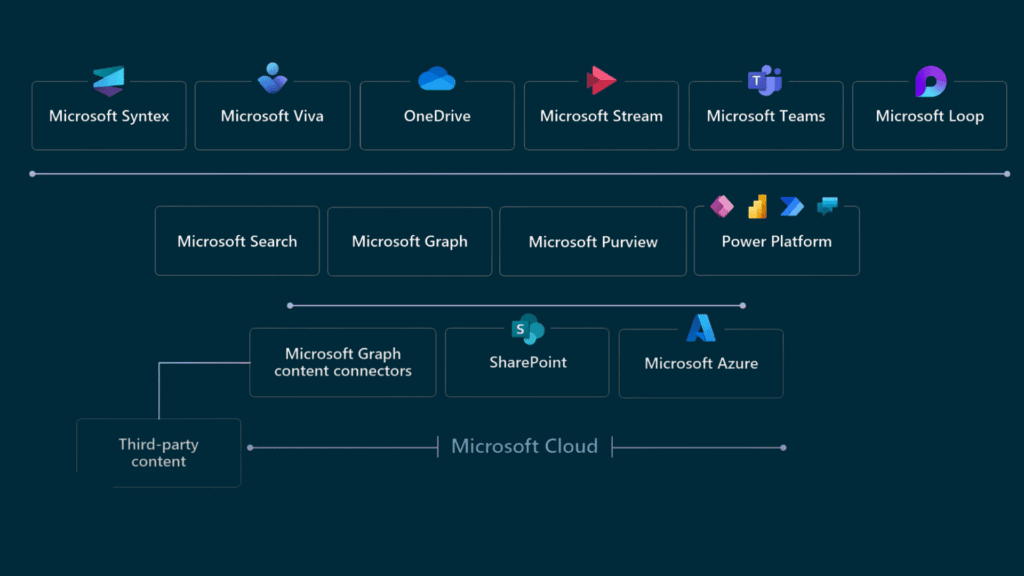
Back to Base – What is Microsoft Syntex?
Now, back to the exciting stuff! Microsoft Syntex – What exactly is it?
With the volume of content and data being created around the world continuing to accelerate, unfortunately the services to make this usable have lagged…until now. Imagine having an AI-powered assistant that can read, understand, and categorise all of your documents and other unstructured data for you. That’s exactly what Microsoft Syntex brings to the table. Using advanced natural language processing techniques, Syntex is able to sift through mountains of data to automatically extract relevant information and make recommendations on how to use and manage that information more effectively.
The Diagram below shows the different elements that drive Microsoft Syntex. These four services combined together makes Microsoft Syntex a part of Microsoft 365 because it leverages SharePoint, it has the Microsoft Azure services, it leverages Purview for all its compliance and security factors, and it also leverages Microsoft Power Platform. Hence, it made sense to detach it from SharePoint and make it a service by itself.
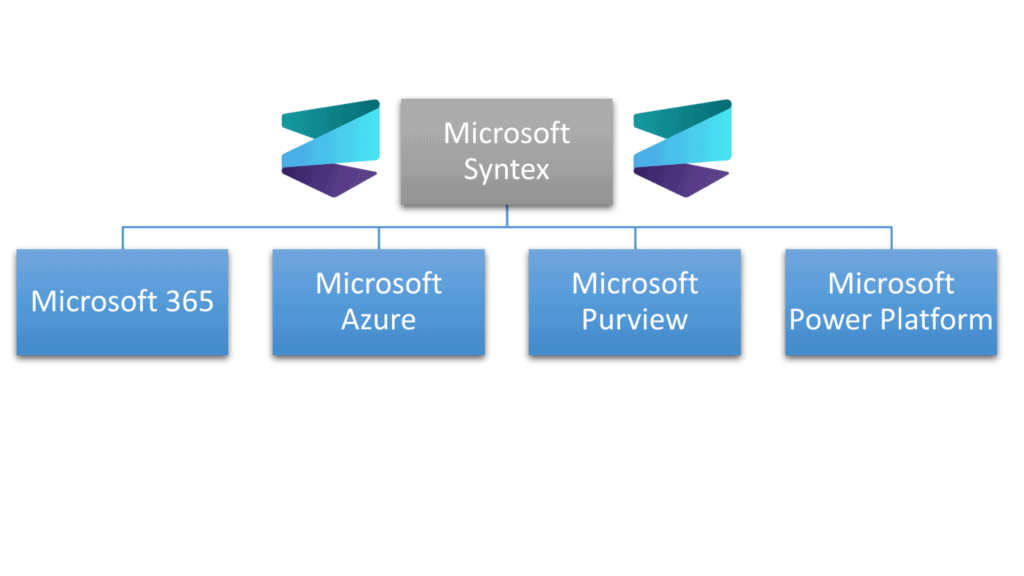
As we said earlier, Microsoft Syntex utilises intelligent document processing, AI for content, and advanced machine learning to provide content comprehension, processing, and compliance. So, how exactly does Microsoft Syntex do this, you ask? Well, it’s a blend of cutting-edge technology, including machine learning models, cognitive services, and Azure AI, that work together like a well-oiled machine. Syntex goes beyond just understanding the general concept of your business, instead, it takes the time to “train” itself to understand your unique needs. Armed with this knowledge, Syntex can automatically identify and classify content, leaving you with one less thing to worry about.
In simple terms, Microsoft Syntex is like a really smart assistant for your documents and other content. It can read through all the information in your documents, like contracts or reports, and figure out what’s important. Then, it organises that information for you and makes it easy to find and use later. For example, if you have a bunch of contracts, Syntex can help you automatically tag them with things like the expiration date or the type of contract. This means you don’t have to waste time reading through all your contracts to find the information you need – Syntex can help you find it quickly and easily. It’s like having a personal assistant who’s really good at reading and organising things, so you can focus on other important tasks!
Syntex is also seamlessly integrated with Microsoft’s Power Platform, making it an excellent tool for businesses looking to improve productivity, reduce costs, and automate tasks. With Syntex, businesses can make informed decisions by extracting valuable insights from their disorganised data.
How Does Microsoft Syntex Work?
Microsoft Syntex helps you make sense of your content by using models. Models let you identify and classify documents that you upload to your SharePoint libraries, and then find the important information you need in each one. In Syntex, you can build custom models or you can use prebuilt models. The diagram below visualises the structure of these models.
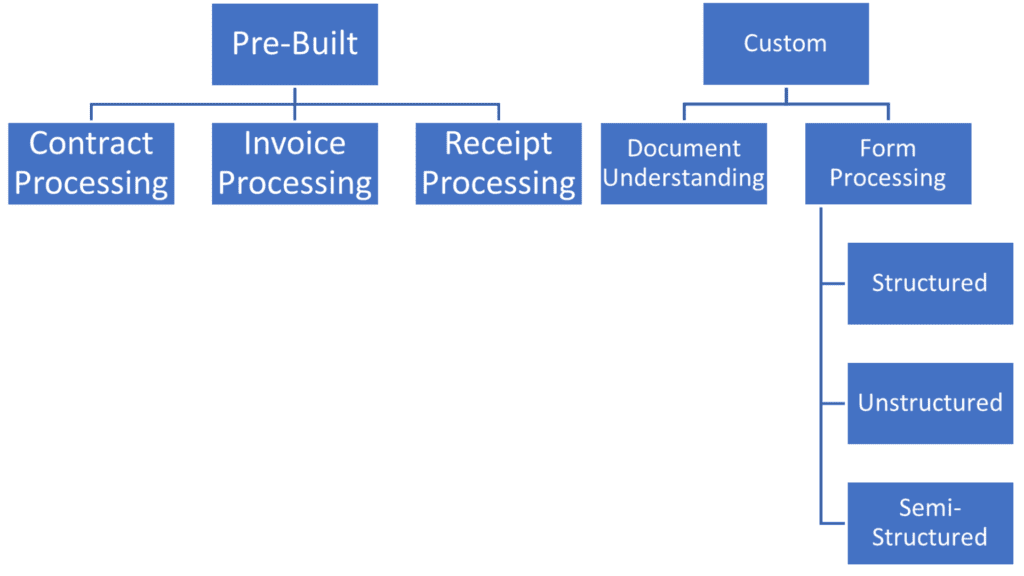
Here’s how it works:
When you put information into Syntex, it looks at it very closely and tries to understand what’s important about it. For example, if you put in a legal contract, Syntex might figure out who the parties are, what they’re agreeing to, and how long the contract lasts.
Once the content models are created, Syntex can begin analysing the unstructured data in SharePoint libraries or other content repositories. Syntex does this by using “AI models,” which are like special rules that tell the computer what to look for. Syntex uses machine learning algorithms to identify the patterns and relationships in the data, and NLP techniques to understand the meaning of the text within the documents. These models can be customised to work with specific types of information, like medical records or engineering drawings.
Once Syntex understands the information, it can add “metadata” to it, which is like a label that describes what’s in the information. For example, Syntex might add a label that says “employment agreement” to a legal contract. Syntex then extracts the relevant information from the data and applies the custom content models to classify and tag the data. This allows businesses to easily find and manage the content, while also ensuring that it is compliant with relevant regulations and policies.
Furthermore, Syntex can make it easier to find information by allowing people to search for it based on the metadata labels that it added. This can save time and make it easier to work with lots of information at once.
Finally, Syntex can automate business processes by triggering workflows based on specific content classifications or data attributes. This not only saves time but also helps reduce errors and improve productivity.
Let’s Sum it Up…
In conclusion, Microsoft Syntex is a groundbreaking technology that has revolutionised the way businesses manage and analyse their unstructured data. Its advanced natural language processing techniques, machine learning models, cognitive services, and Azure AI work together seamlessly to extract valuable insights from disordered content, freeing up time for businesses to focus on other essential tasks. With its integration with Microsoft’s Power Platform, Syntex is a powerful tool that can boost productivity, reduce costs, and automate tasks, providing businesses with a competitive edge in the digital age. As the world continues to embrace digital transformation, Microsoft Syntex will undoubtedly remain a crucial tool for businesses looking to succeed in an ever-changing landscape.
STAY UP TO DATE
Catch up on the latest blogs, eBooks, webinars, and how-to videos.
Not a member? Sign up today to unlock all content.
Subscribe to our YouTube channel for the latest community updates.

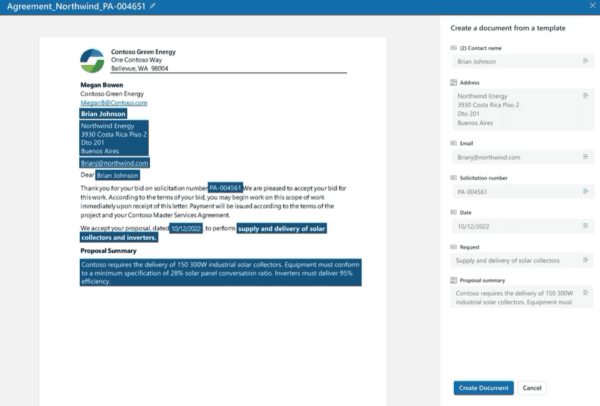






 Using a SharePoint Online list as a Knowledge source via ACTIONS in Copilot AI Studio
Using a SharePoint Online list as a Knowledge source via ACTIONS in Copilot AI Studio
